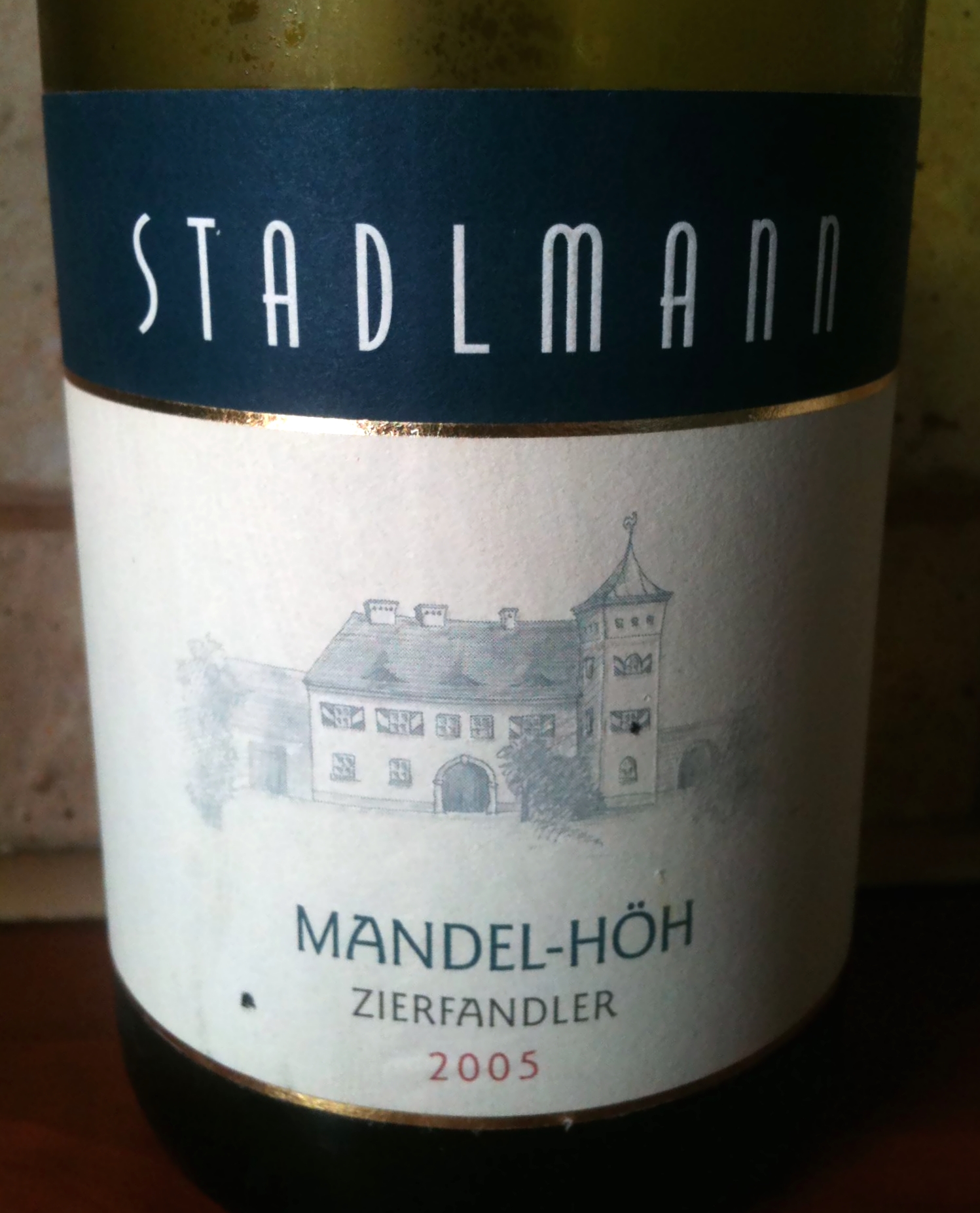Stadlmann Mandel-Höh 2005
Posted on 3 October 2011
Regular readers will know I have a soft spot for rare indigenous grape varieties. One of my favourites are Rotgipfler and Zierfandler from Austria. They might not be so obscure – 120 and 100 ha are still grown respectively – but surely they are curiosities.

The Mandel-Höh vineyard, source of today’s wine. © Weingut Stadlmann.
Rotgifpler and Zierfandler (a.k.a. Spätrot) are traditional of the Thermenregion area south of Vienna and have historically been blended into a powerful, aromatic wine with good ageing potential. Today they are experiencing a small renaissance, but are usually made separately into varietal wines. Rotgipfler is the more powerful of the two, yielding impressive, broad-shouldered whites that digest oak well. My favourite is the Rodauner Top Selektion from Karl Alphart.
Apart from Alphart several other estates make very good Rotgipfler, but not Zierfandler. It’s a more difficult grape to do well. It has higher acidity, less body, and the flavours are finer so the winemaking needs more precision. I have long been a fan of Weingut Stadlmann – their basic Zierfandler is a fine introduction to this quirky grape, and the Rotgipfler and Pinot Blanc are also excellent here. It is on the soft limestoney hill of the Mandel-Höh vineyard, however, that Zierfandler reaches its top expression and the Stadlmanns make their best wine.
Delicious in its youth, this wine is also reputed for ageing potential so I gave it go and cellared the 2005 vintage since release. At age six it is a surprising wine. Not easy to ‘get’: upon opening it didn’t impress me so much. Slightly aged bouquet of honey and dried fruits, fresh acidity… but little else. Not the complexity and personality I was expecting.
I took a second and third tasting over 24 hours to really appreciate this uncommon wine. The thing is that it is pretty subtle and understated; there’s no excess. Instead of the brooding tertiary complexity of many aged whites, there’s a quiet interplay of fine nuances. Instead of big phenolic richness, plenty of pithy grapefruity acidic freshness for better balance. With time, there are interesting aromas coming up: citrus, Cox apple, pink grapefruit but also rose petals and almonds. Mandel-Höh means ‘the high place where almonds grow’, and although almonds are often a replacement descriptor (when you can’t smell anything in a wine, it’s safe to say almonds), I can really sense them here, with their fine balance of sweetish and bitterish.
It’s one of those wines that don’t wow you but haunt you for hours after the last sip. At 17€ it is also a great buy, for drinking now or for ageing. Zierfandler – one of the little forgotten gems of the wine world.
Disclosure
Source of wine: own purchase.



